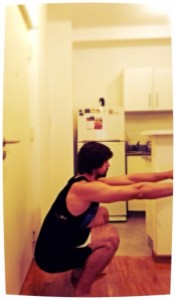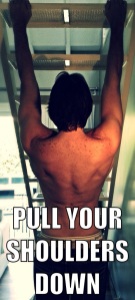Strength = skill = practice
Why is strength so effective to develop when tight in time? Because strength is a skill. It’s the skill of building tension in the muscles, and every skill gets better the more we practice (of course, practice correct form, cues, etc.). If we tone it down, if you want to press more you’ll have to press more. If you practice more while well rested you’ll get a lot better a lot quicker.
Minimal approach works best
If you’re short on time you don’t want (or can’t) be in the gym, or your garage for long periods of time. So pick 2 to 4 exercises total. And practice them, really nail them down. Take this forced focus to get the most out of these exercises.
So, what’s the recepie for busy people anyway?
You’ll go to a HFT type of work. High frequency and intensity, with low volume (remember, a little every day goes a long way). Pick 2-4 exercises and practice them 3-5 times a week, and do 2-3 sets of 3-6 reps. The more you practice them, the better the results we’ll be at the end.
So, here are a couple of suggestions:
Barbell
Over head press (strict): 2 x 5 with a load you can manage 7 reps solidly. Rest 2-3 minutes between sets. Add weight after every second session that you nail the 2×5.
Deadlift: Same. 2×5 with a load you can manage 7 reps solidly. Rest 2-3 minutes between sets, adding weight after every second session that you nail the 2×5.
Squats: Follow the same protocol. Squats should be alternated with deadlifts (one session each) if you’re going to do them.

You can never go wrong working on the deadlift. Probably THE most complete excercise and importante exercise for busy people. Photo by Amber Karnes
Kettlebells
A1) TGU: 2 x 1, 2, 3, 4, 5 reps. Start with 2 x 1, 2, 3 and add one rung to the ladder every second session you manage the alloted number of rungs.
A2) Goblet Squat: 2 x 1, 2, 3, 4, 5 reps. Start with 2 x 1, 2, 3 and add one rung to the ladder every second session you manage the alloted nmber of reps.
Go back and forth between this two resting as needed.
B1) Kettlebel Swings: 50-100 reps total. Keep it easy and don’t exhaust yourself with this. It’s just to finish up!
Bodyweight
Push up variant or Dip: 2 x 5
Pull-up or Row: 2 x 5
Squat: 2 x 10
Leg Raises: 1 x 10
Do this in a circuit fashion. Rest 2 minutes between circuits. And do these exercises like you mean it. Once you feel they’re two easy try a new, hard variant.
Now, that you’re not busy enough, what’s your excuse?















